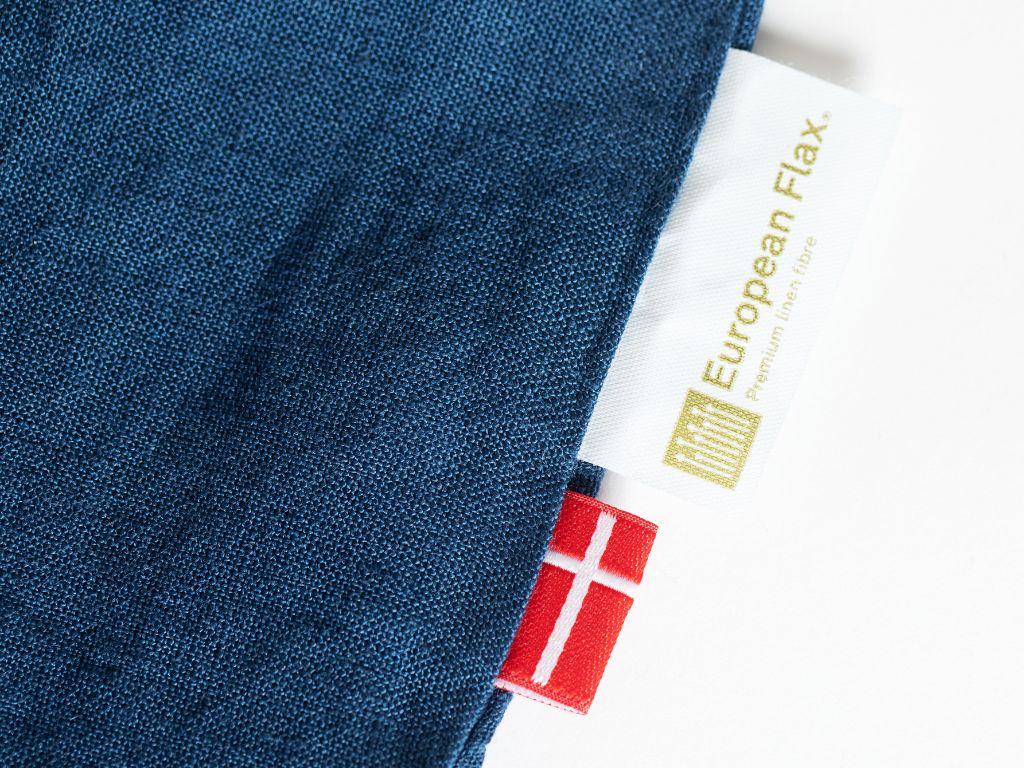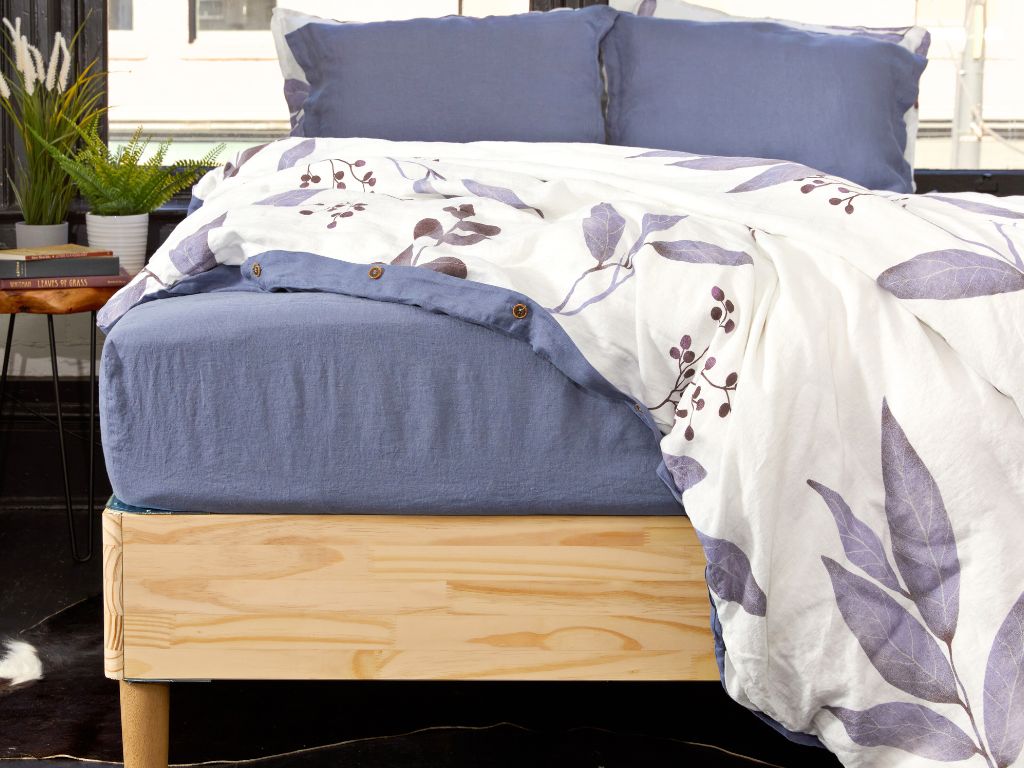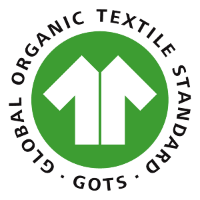
Does Linen Need to Be Organic?
Organic textiles—including organic linen—are now widely available. But does linen actually need to be organic? What are the benefits? And is it worth spending more to own it? Find out why it’s worth buying organic—both for yourself, and the planet.
How Do I Know Whether My Linen Is Organic?
If your linen bedding is made from certified European Flax, rest easy—your linen bedding is inherently organic.
Certified European Flax is grown in the “flax belt” of northern Europe—a 90,000-hectare strip of land across the northwest coast of France, Belgium, and the Netherlands. Here you’ll find loamy soil and a wet, temperate climate: the perfect conditions for growing flax naturally. Nothing else needs to be added: the soil doesn’t need artificial fertilizer, and the rain alone is sufficient for irrigation.
Flax is cultivated in other countries outside of the flax belt but the conditions are far from ideal. Farmers use artificial irrigation, fertilizers, and pesticides to increase yield, causing harm to the environment and surrounding communities. To support sustainable flax farming and linen production, it’s best to buy European.
All producers working within the flax belt have signed up to the European Flax charter. The charter guarantees local farming that respects the environment, uses no artificial irrigation, and produces zero waste and zero genetically modified organisms (GMOs). Additionally, the charter’s signatories comply with the International Labour Organization (ILO), which promotes social justice through human and labor rights.
What Is GOTS Certification and Why Is It Important?
Another organic certification to look out for is the Global Organic Textile Standard (GOTS). In 2011, the United States Department of Agriculture (USDA) issued a policy memorandum declaring that products with GOTS certification can officially be sold as “organic”—a designation that is strictly regulated in the United States. According to the memo, GOTS certification is a valid alternative to USDA organic certification.
Products with GOTS certification have met stringent environmental and social criteria for the processing of organic fibers. A GOTS-approved local certification body sends auditors to the textile manufacturing site to evaluate textiles and process chemicals for toxicity. Many chemicals, such as carcinogenic Azo dyes and chlorine bleach, are banned outright. Unlike USDA organic certification, GOTS also prohibits child labor and requires fair wages.
The Modern Dane is proud to be GOTS certified. Our organic linen bedding is free from toxic chemicals and produced ethically at a textile mill in Guimaraes, Portugal. For more on European Flax, GOTS, and OEKO-TEX certification, check out our dedicated blog on the topic.
Is Organic Linen Bedding More Expensive?
Not necessarily. Yes, organic linen bedding usually has a higher upfront cost—but that’s rarely the best way to evaluate the true cost of a purchase.
A better way to calculate cost is to think in terms of cost per use: the price of the item, divided by how many times it is used. When looked at in these terms, organic linen bedding is actually great value.
Without the interference of artificial retting chemicals, bleaches, dyes, or softeners, organic linen duvet covers retain all the properties of the flax plants from which they were made. Linen is a bast fiber, meaning that the fibers are extracted from the stem of the plant and are many cells thick. Unadulterated, organic linen, therefore, is extremely strong and durable—it can lasts for many years. When taking this into account, the cost per use is negligible.
Non-organic linen, on the other hand, is damaged many times during production—starting with retting, which takes place after harvesting. Retting is the process by which the outer layer of the flax plant is dissolved to leave the inner core. With organic linen, this process takes place naturally over a few weeks, using only rainwater. Non-organic linen, however, speeds up retting by soaking the stems in an acid or alkali. This results in a weaker fiber.
More chemicals are added at the factory: bleaches, dyes, and finally softeners. Chemical softeners make the bedding feel softer out of the box but at the expense of the fibers’ natural strength.
So, while non-organic linen has a lower upfront cost, you’re likely to see wear and tear much more quickly, making it a less reliable investment than organic linen duvet covers.

What’s Wrong with Organic Cotton?
We’ve written at length about how the environmental and social damage caused by non-organic cotton—but is organic cotton better? Cotton proponents like to trot out certain statistics, such as organic cotton using 91% less water than conventional cotton. But that’s not the whole picture.
In a myth-busting article published in 2023, the New York Times wrote that organic cotton requires more land, water, and energy, which causes higher greenhouse gas emissions. The article also cited an NYT exposé from 2022, which found that much of the “organic” cotton exported from India is fake.
By contrast, organic flax is a carbon-negative crop, as the flax fields act as carbon sinks that lock away more carbon than is used in production. Certifications such as European Flax and GOTS provide guarantees that your organic linen duvet covers are 100% genuine and traceable.
Simply put, organic cotton cannot compare with organic linen for sustainability. Not to mention the many other benefits linen has over cotton: its durability, breathability, and thermoregulating properties.
Is Organic Linen Better for Health?
Organic linen bedding has many properties that aid in better sleep and the health benefits that come with it. Thanks to naturally-occurring pores along the length of the fiber, linen is breathable and moisture-wicking, meaning that you’ll stay dry and comfortable at night. Those pores also give organic linen thermoregulating properties, meaning that it keeps you cool when it’s warm and warms you up when it’s cool.
Non-organic linen lacks these properties: the application of chemical softeners during the production process blocks the pores, limiting the linen’s ability to wick moisture and thermoregulate. Other chemicals applied to non-organic linen may be harmful to your health—to find out more, check out our deep dive on bedding chemicals.
The Modern Dane’s Scandi-style duvet covers are 100% organic, making the most of the natural properties of flax—so you can sleep soundly every night.
Is buying organic important to you? Would you consider making the switch to organic bedding? Let us know on Instagram, Pinterest, Facebook or Twitter!










